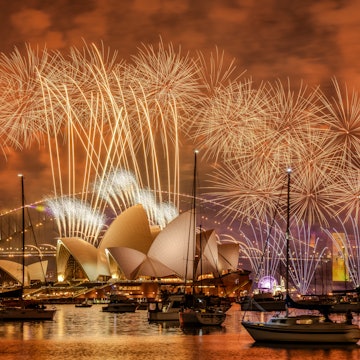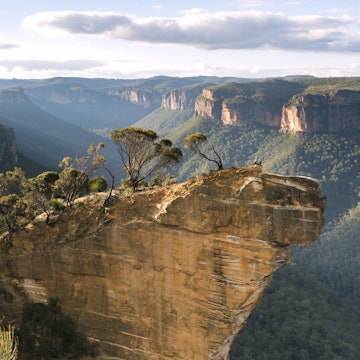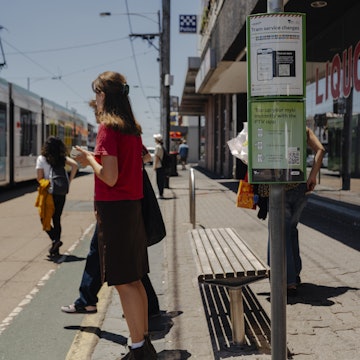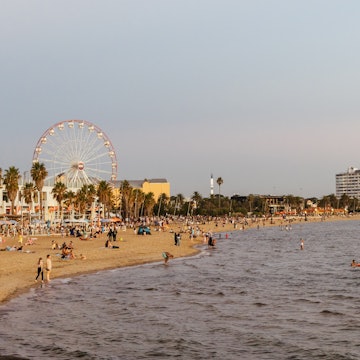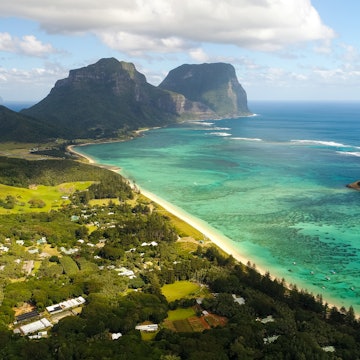
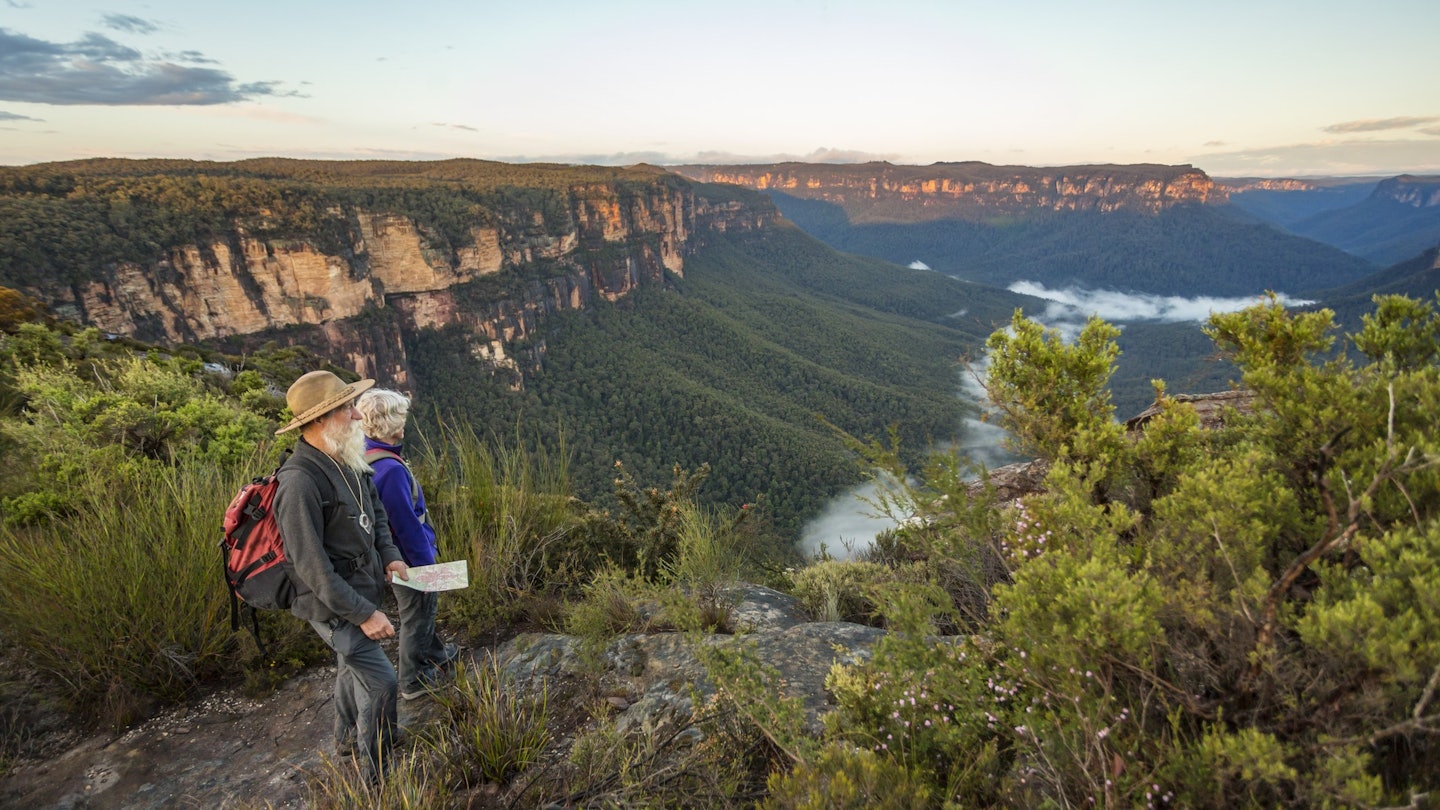
Plan the right time for your visit to Australia with this seasonal guide to what's happening through the year. davidf / Getty Images
As the largest island on the planet and stretching across several timezones, Australia has a range of landscapes that range from vast arid deserts and scrublands to lush tropical rainforests and sun-drenched coastal cities.
Each season brings its own magic, depending on where you are and when. Summer can either mean comfortable temperate days, blistering desert heat, or periods of extreme humidity and frequent rain. Similarly, winter can deliver snow or sunshine, depending on your location – and preference.
In short, the best time to travel to Australia depends on what you plan to do when you get there. From festivals and days at the beach to whale watching and wildflowers, here’s what you need to know to choose the best time for your visit Down Under.

December to February is the best time for major sporting events and festivals
Thoughts of Australia often conjure summer scenes of clear skies, brilliant sunshine and snorkeling along coral reefs. December to February brings the hottest months with the longest days. This is also the peak travel season, so come prepared for crowds and premium rates on accommodation, particularly during Australian school holidays (which typically run from late December to late January).
Incredible as they are, there are plenty of places beyond the beaches to enjoy summer in Australia. As the tropical north bunkers down for the wet season (with some remote regions such as the Kimberley all but closing up business until “the Dry” returns) this is the time to head south for festivals, sports and sunshine.
Big ticket events in January include the Australian Open tennis tournament in Melbourne and the Sydney Festival, a visual and performing arts festival. Also not to be missed are quirky regional events such as Parkes Elvis Festival in rural New South Wales, timed to coincide with the King of Rock and Roll’s birthday.
In February, the world’s second-largest Fringe Festival (after Edinburgh) takes over Adelaide, while the streets are lined with glitter and rainbows for Sydney’s version of Pride: the Gay and Lesbian Mardi Gras. There are also countless outdoor music festivals (both ticketed and free) across the country during this time, particularly over the New Year’s holiday period.

March to May and September to November are the best times to combine an outback trip with a city break
The shoulder seasons of spring (September to November) and autumn (March to May) can mean more rain in many areas, but much milder temperatures. This makes it easier to experience both city and outback life in one trip.
During these periods, you'll find relief from otherwise scorching outback temperatures, making it the ideal time to visit destinations in the Red Centre such as Uluru-Kata Tjuta National Park. Meanwhile, hiking routes, including Central Australia’s Larapinta Trail, South Australia’s Heyson Trail and Cathedral Gorge in Western Australia’s Purnululu National Park, are a lot more manageable in the cooler months.
If you’re visiting the Kimberley between March and May, you may also be rewarded with glimpses of the waterfalls at the tail end of the wet season.
However, be aware that schools take two-week breaks, usually at the beginning of April and the end of September. Many Australian families take holidays during these periods, which can affect the availability and cost of accommodations.
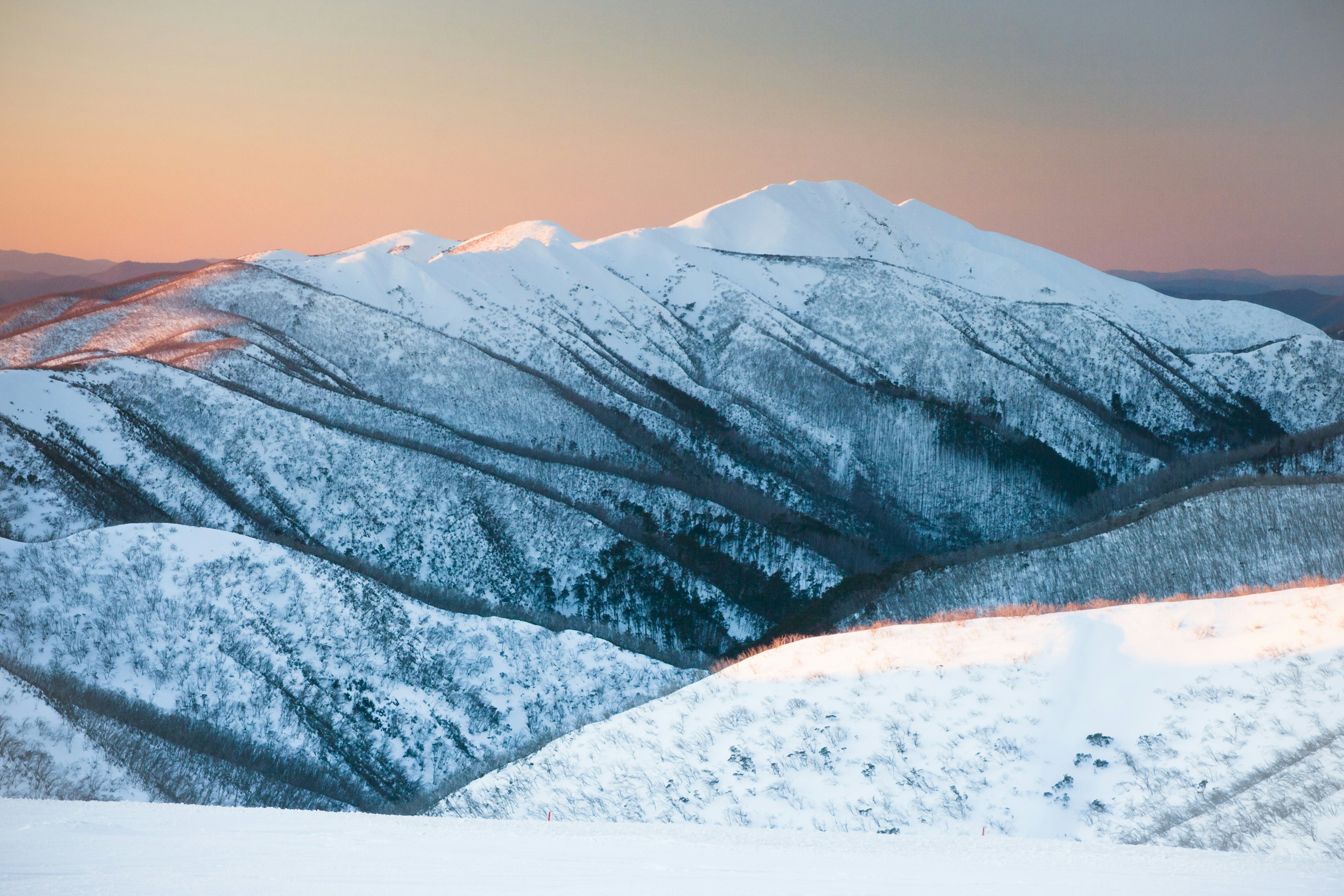
June to August is the best time to snorkel on the Great Barrier Reef or hit the slopes
The winter months of June through August are generally the cheapest time of year to travel throughout much of Australia, with fewer tourists and better deals on flights and accommodations in most areas.
There are exceptions to the rule, though. The drop in temperatures and drier weather drives tourism to iconic destinations such as Uluru, as well as Cairns, Darwin and the Kimberley. It can also be cooler than many tourists expect, with temperatures in the Red Centre dropping below 0°C/32°F overnight – pack accordingly.
In Queensland, jellyfish – including the infamous Irukandji – are less prevalent during winter, which also means it’s an ideal time to snorkel or dive on the Great Barrier Reef.
If you’re planning to visit these areas, be prepared to jostle for accommodation as domestic travelers from the southern states also head north to escape the cold, with most school districts taking a two-week break at the start of July.
However, it’s just as popular to head into the cold. While neighboring New Zealand is better known as a ski destination, Australia also has fantastic snow experiences to appease powder hounds. New South Wales’ aptly named Snowy Mountains – roughly 490km (304 miles) from Sydney – is home to Perisher (the largest ski resort in the country) and the nearby Thredbo resort. In Victoria, you can hit the slopes 385km (239 miles) from Melbourne in Falls Creek or take to the steeper runs of Mt Hotham.

May to September is the time to experience Australia’s winter festivals
Winter doesn’t mean an end to the celebratory vibes. Instead, May to September is a flurry of activity in capital cities and regional hubs across Australia, with festivals to excite avid foodies, art aficionados, music lovers and more.
Alice Springs’ Parrtjima Festival kicks off the return of shorter days in April. The free 10-night festival celebrates First Nations culture with interactive workshops and performances and sees the MacDonnell Ranges transformed by an incredible light installation.
Next up is Hobart’s subversive Dark Mofo festival – timed to coincide with the winter solstice in June. It’s one of the country’s most fêted off-season events, with massive bonfires, live music and performance art taking over the Tasmanian city. Dark Mofo is on pause for 2024 (scheduled to return in 2025), but daring visitors can still partake in the annual Nude Solstice Swim and Winter Feast.
Also in June, Sydney’s Vivid Festival draws visitors by the thousands for its light projections and a program of thought-provoking presentations. Similarly, Melbourne’s Rising Festival and Adelaide’s Illuminate both light up the long winter nights with bold projections and installations across the cities, alongside immersive free and ticketed events. Both are held annually between June and July.
On the other side of the country, foodies tuck into the season’s best at Truffle Kerfuffle in Manjimup, WA, followed by the Cabin Fever food and culture festival in July in Margaret River. Finally, if you’re in the Northern Territory in August, you might want to add the Darwin Festival of Arts and Culture to your itinerary.
May to November is prime time for whale watching
If you love marine wildlife, May through to November marks the best months to glimpse whales as they make their twice-annual migration along the coast. Starting in April, tens of thousands of these majestic mammals begin their journey north from their Southern Ocean feeding grounds. They breed and give birth in warmer waters along Australia’s shores, before returning south with their young.
The coastlines of South Australia, Tasmania and Victoria are some of the best places to see southern right whales, while humpbacks and the occasional orca put on a show along the east and west coasts. Western Australia is the place to spot elusive sperm and blue whales.
Another phenomenon you may be lucky enough to see in Tasmania’s southern latitudes at this time of year is the aurora australis or southern lights. Popular places to witness the dancing colors include Cradle Mountain-Lake St Clair National Park, Bruny Island and the secluded Bathurst Harbour.

August to October is the best time to see rare and endemic wildflowers
We know what you’re thinking. Flowers, for spring? Groundbreaking. But thousands of Australia’s wildflowers bloom nowhere else on the planet. Case in point are the flowers of Western Australia’s southwest. There are more than 12,000 species, 60% of which are endemic to the region. The Indigenous peoples of this region, the Noongar, acknowledge six seasons of the year, and August to October marks the transition to Kambarang, the height of the flowering season. This is celebrated at Perth’s EverNow Festival in October.
Other notable places to experience the wildflower season include the Blue Mountains and Booderee National Park in New South Wales and Ikara-Flinders Ranges National Park in South Australia. Victoria also boasts numerous spots including the Grampians (Gariwerd), which is home to one-third of the state’s flora and where the flowering season is known locally as petyan. The Dandenong Ranges are also a popular stop, particularly for those wanting to experience wildflowers and a winery or two of the nearby Yarra Valley.
At this time of year, you’ll find countless regional flower festivals across the country, alongside larger celebrations. Two of the biggest are Canberra’s Floriade (the largest flower festival in the southern hemisphere, hosted from September to October) and Toowoomba’s Carnival of Flowers in September.








